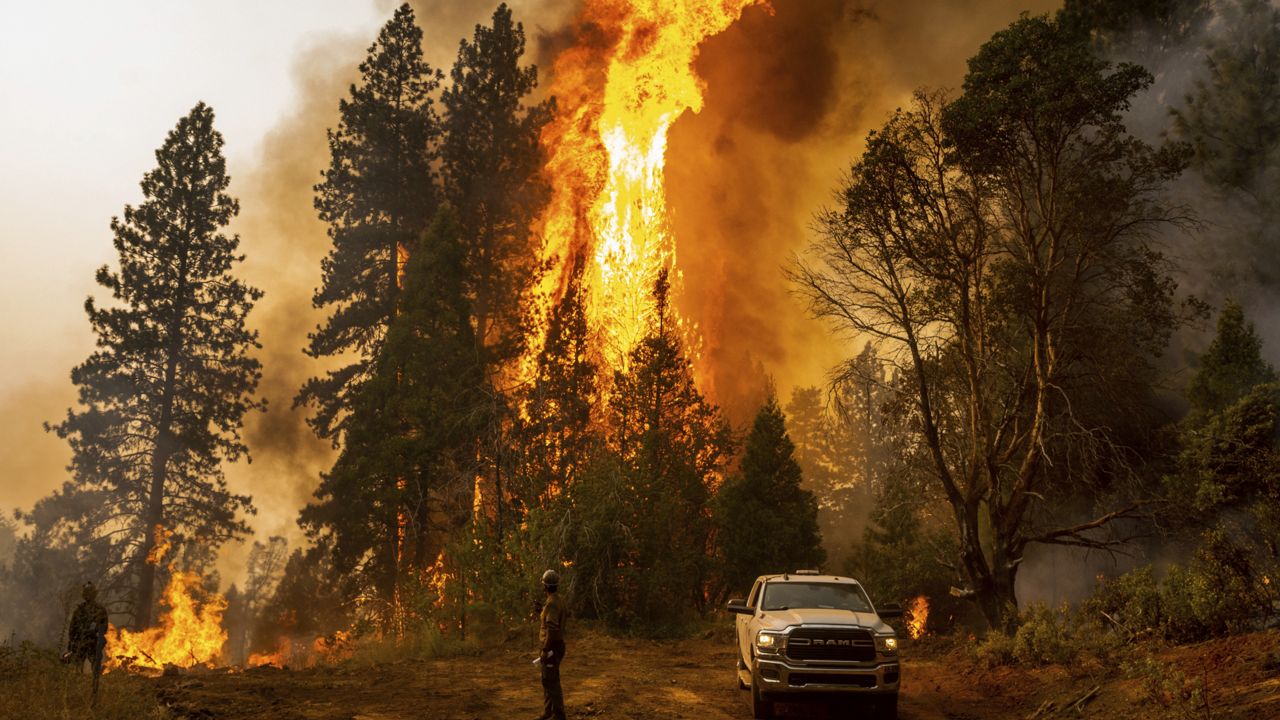The Biden administration on Thursday unveiled a $490 million investment to aid some of the regions most at-risk from wildfires in the Western United States, hoping to protect communities and their critical infrastructure from the devastating impact of forest fires.
The funds, which come from the Bipartisan Infrastructure Law and Inflation Reduction Act signed last year, will go towards fire mitigation projects across 11 regions in Arizona, California, Idaho, Nevada, Oregon, Utah and Washington.
“It is no longer a matter of if a wildfire will threaten many western communities in these landscapes, it is a matter of when,” Agriculture Secretary Tom Vilsack wrote in a statement. “The need to invest more and to move quickly is apparent. This is a crisis and President Biden is treating it as one.”
Thursday’s funding brings the Biden-Harris administration’s total allocation to $930 million, covering approximately 45 million acres. Some of the funds will also be used to increase “resources from the Bipartisan Infrastructure Law in the initial 10 landscapes” awarded last year, officials said.
According to the National Interagency Fire Center, over 10 million acres burned across the United States in 2020, the most acres destroyed by wildfires over the past 21 years. Those numbers decreased to a little over 7.1 million acres burned in 2021.
California has, in recent years, borne the brunt of wildfire damage in the United States, both in terms of amount of wildfires and acres burned. 2022 saw nearly 3.6 million acres burn across the state, while around 2.5 million acres burned the year prior.
The funds announced Thursday will go towards communities that “have high risk for catastrophic fires,” a USDA spokesperson told reporters. Factors used to identify those with the highest risk include heavily populated areas with “wildland-urban interface,” those whose critical infrastructure would be at risk due to wildfires and other areas that would be significantly impacted or disturbed due to fire spread.
“We also factored into this determination the most current predictive science and research that will allow us to determine where risks are highest,” agency officials said in part, saying the USDA expects “around 200 communities in the Western U.S. will see a mitigated fire, wildfire risk as a result.”
Most of the projects to receive funds are “shovel-ready,” officials said, many of which entail efforts like mechanical thinning, prescribed fires or biomass removal.
“It could be a combination of all three, it could be one, it could be two of the three,” officials told reporters of how and where the money will be implemented. “But most of the work will be done in those areas, in areas that we know, if treated, can mitigate and reduce the risk of catastrophic fire. And that's the goal here.”
California will receive money for projects across six different communities, including for the Sierra and Elko Fronts near Nevada; Oregon and California will receive funds for the Klamath River Basin, and California will also receive money allocated to the Plumas Community Protection, the Southern California Fireshed Risk Reduction Strategy and the Trinity Forest Health and Fire Resilient Rural Communities.
In Arizona’s San Carlos Apache Tribal Forest Protection Project, which spans nearly 3 million acres, officials will both work to “protect international waters shared with the tribe, drinking water systems, as well as residential areas,” as well as manage fuel use so as to reduce wildfire exposure to nearby telecommunication sites.
The funds released Thursday build upon a national strategy released by the Forest Service last year, a 10-year plan that aims to “address this wildfire crisis in the places where it poses the most immediate threats to communities,” the agency said in part.
At the time, the Forest Service identified 10 high-risk landscapes across Washington, Oregon, California, Idaho, Montana, Colorado, New Mexico, and Arizona to receive a first round of funds to implement fire mitigation strategies before disaster strikes.



